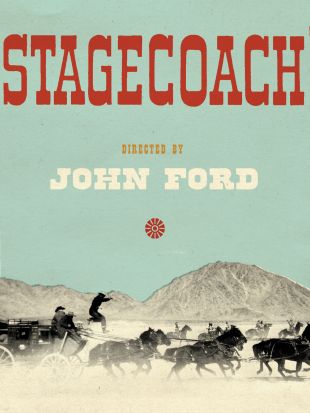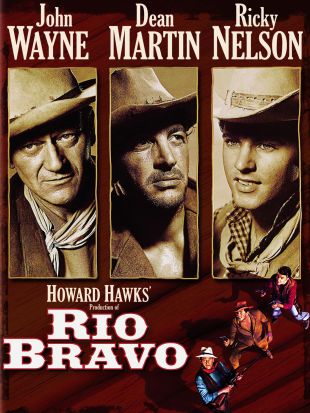Yakima Canutt was the most innovative stunt performer and coordinator ever to risk life and limb for the art of Hollywood illusion. Cheating death at every turn, many of the tricks of the trade he first developed in the Westerns of the silent era remain fixtures of the craft even today. Born Enos Edward Canutt on November 29, 1895, in Colfax, WA, he began working on ranches while in his youth and at the age of 17 signed on as a trick rider with a Wild West show, where he ultimately won the title of Rodeo World Champion. Billing himself as Eddie Canutt, "the Man From Yakima," in 1917 he met Hollywood cowboy star Tom Mix, who recruited him as a stunt man. Quickly he became one of the leading fall guys in the industry, with a knack for horse spills and wagon wrecks. Over and over again, Canutt brought Western reelers to a rousing finale by doubling as the hero as he leapt from his horse to tackle a villain attempting to flee from the long arm of the law.
In 1920, Canutt first earned billing for his work in The Girl Who Dared. Soon his name was appearing in the credits of several Westerns each year, all highlighted by his daredevil antics. His reputation rested on his ability to mastermind larger-than-life sequences -- cattle stampedes, covered-wagon races, and the like -- as well as intricate battles between frontier settlers and their Indian rivals. He could also be counted on to leap from a cliff's top while on horseback, or from a stagecoach onto its runaway horse team. For his elaborately choreographed fight scenes, Canutt developed a new, more realistic method of throwing punches, positioning the action so that the camera filmed over the shoulder of the actor receiving the blow, with the punch itself coming directly toward the lens. With the addition of sound effects, the illusion of fisticuffs was complete, and the practice remains an essential component of the stunt man's craft today.
Under Canutt's supervision, a number of rules and guidelines designed to improve stunt safety were established, all of them becoming industry standards. Indeed, to his credit no one was ever seriously injured in any of his films. Many of Canutt's most important innovations involved his use of rigging: In one such attempt to minimize the possibility of broken bones, he carefully rigged his stirrups to break open to allow his feet to release at the proper moment. He also rigged cable mechanisms to trigger stunt action, maintaining more control over his scenes to eliminate the possibility of catastrophe. Gene Autry, Roy Rogers -- nearly every major Western star -- owed much of his success to Canutt's daring; eventually, his mastery of the craft was such that scripts were penned without detailed descriptions of their fight scenes or chases, and "Action by Yakima Canutt" was simply written instead.
By the mid-'20s, Canutt was starring in Westerns as well as handling stunts. However, as the sound era dawned he suffered an illness which stripped the resonance from his voice, effectively ending his career as a leading man and reducing him to turns as sidekicks and heavies. In 1932's serial The Shadow of the Eagle, he was cast alongside John Wayne, beginning a partnership that was to endure for many years; their most notable collaboration was the 1939 classic Stagecoach, where Canutt not only came aboard as the stunt supervisor but also appeared onscreen to take falls as a cowboy, an Indian, and even as a woman. In addition to keeping peace between Wayne and director John Ford, Canutt also performed one of the most legendary stunts in film history, a pulse-pounding pass under a moving stagecoach: Doubling as an Indian, he rode his horse ahead of the coach before attempting to leap over to its lead team and dropping to the ground; after a brief moment, he then released his grip and allowed the horses and the coach to pass over his body.
As Canutt grew older, injuries began to take their toll, and he cut back on his rigorous schedule, making the transition from stunt performer to coordinator to, ultimately, director. However, he still found time to appear onscreen in noteworthy films like 1939's Gone With the Wind, not only standing in for Clark Gable during his wagon drive through the burning streets of Atlanta but also playing the renegade soldier who attacks Scarlett O'Hara and tumbles backward down a flight of steps. In his later years Canutt also served as a second-unit director, most notably aiding William Wyler on 1959's Ben-Hur, where he helped supervise the choreography of the famed chariot race (a sequence two years in the making). Canutt also oversaw the many animal action scenes in Old Yeller, as well as the car chase in The Flim-Flam Man.
In 1966, Canutt received a special Academy Award for his lifetime of excellence as a stunt performer, winning kudos "for creating the profession of stunt man as it exists today and for the development of many safety devices used by stunt men everywhere." In 1975, he was also inducted into the Cowboy Hall of Fame in Oklahoma City. Canutt remained active in films until 1976, ending his career as a consultant on Equus. His son later carried on in the family business. In 1979, Canutt published his memoirs, Stunt Man: The Autobiography of Yakima Canutt. Yakima Canutt died in Hollywood on May 24, 1986, at the age of 90.


